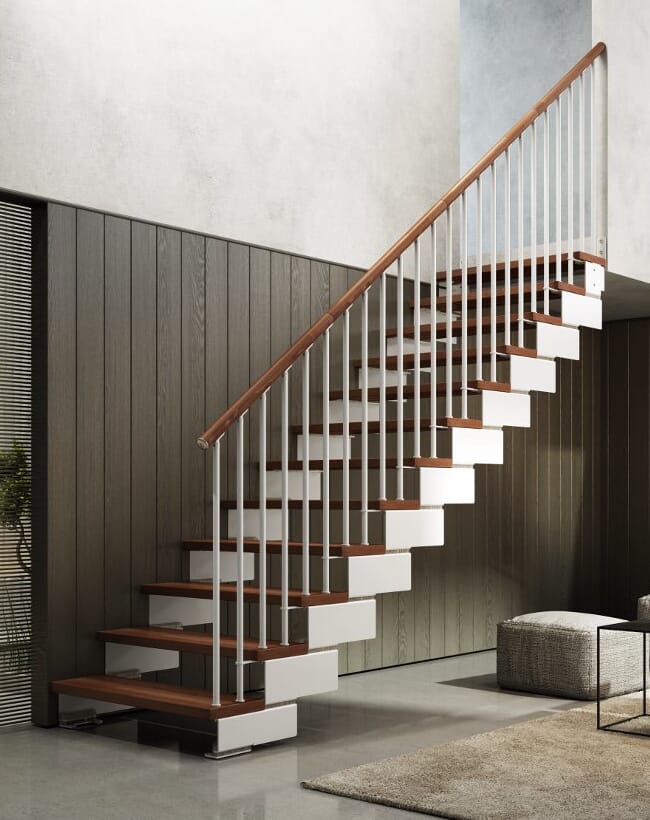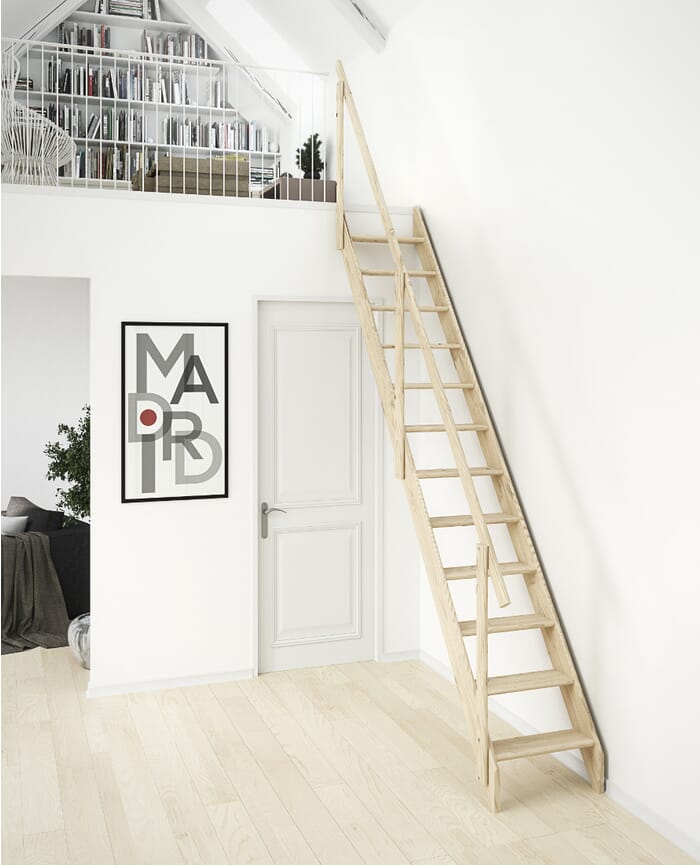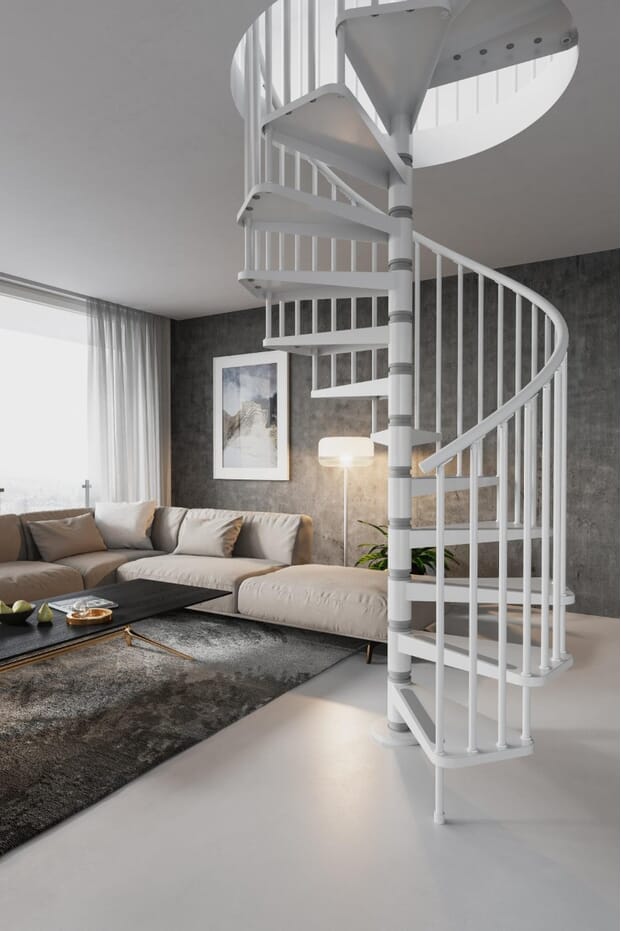Loft Ladder & Loft Stairs Building Regulations

Composity Adjustable Modular Staircase
Top Queries on Loft Ladder & Loft Stairs Building Regulations
With so many UK local authority laws governing the use and installation of loft ladders, loft stairs and loft conversions, it can sometimes feel a little bit overwhelming. However, you shouldn't let that stop you from expanding your living space - it's more than likely that these loft stairs building regulations aren't as complicated as they seem!
That's why we thought it best to go over a few of the most common queries about building regulations for stairs to your loft.
When Should You Install a Loft Staircase?
It entirely depends on how you are using your loft space. If you intend on using it as a non-habitable space for storage only, then you are under no legal obligation to install anything at all, but this would be an erroneous decision.
Installing a purpose-built loft ladder is the safest way of accessing your loft storage space, saving yourself a grievous injury caused by a fall. Not only that, but it's a perfect time-saver, preventing you from having to fetch that rickety old ladder out of the shed every time you need to get up there.
What If I Want to Convert My Loft Into a Habitable Living Space?
With more frequent use comes a greater chance of an accident, so you should always install a proper loft ladder for safe and secure access. Concertina and sliding loft ladders are the two main types of loft ladders and tend to be most common amongst savvy homeowners looking for safe, space-efficient access at a good cost. Alternatively, a spacesaver staircase is an excellent choice for any attic room, as this provides a more permanent, inviting access solution that looks and feels just like a normal staircase - whilst at the same time taking up very little space at all.
What is the Definition of a Habitable Living Space?
According to building regulations, a habitable living space is defined as being one that is “used or intended to be used, for a dwelling house purpose (including for the purposes of Part B, a kitchen but not a bathroom).” So a living room, bedroom, kitchen or dining room would all count. In short, if you intend to use your attic as an additional room in your house rather than for storage, you will need to follow the building regulations accordingly.
Be aware that building regulations are much more stringent when it comes to converting your loft into a living room or 'den', and require the installation of loft stairs. This is considered the quickest, safest method of escape in the event of a fire, something of which is the highest concern to local authorities.
If you are thinking about converting your unused loft space into a third-storey living room or custom hideaway, there are plenty of varieties of loft stairs available which are building regulation compliant, though it is always important to check with your local council before making any purchases.
What are the Building Regulations for Installing a Loft Staircase?
We have outlined the most important loft stairs building regulations to adhere to when accessing your loft conversion:
- The pitch or angle of the staircase must not be greater than 42 degrees.
- The minimum headroom height (area above the staircase) is traditionally set at 2m with a decrease to 1.8m if there’s a sloping roof.
- All risers must be equal with a minimum height of 150mm and a maximum of 220mm.
- A handrail must be provided.
- In accordance with Fire Safety Regulations, loft stairs must have a minimum of 30 minutes of fire resistance.
- Space saver stairs may be used as an alternative, but only if assisting a single room.
Alternative Loft Ladder & Loft Stairs Building Regulation Solutions
Fixed Loft Ladders
A more affordable option, fixed loft ladders must only be used for a single room conversion and cannot feature retractability; handrails on either side must also be included.

(The Dolle Madrid fitted with two handrails can be accepted as a fixed loft ladder option under the Building Regulations.)
Spiral Staircases
Providing that your spiral staircase adheres to the rise and tread going requirements, this stunning alternative to a traditional staircase is a great choice to enhance your loft space.

Paddle Staircase (Alternating Treads)
A much more compact option, the paddle staircase provides alternating treads and should primarily be used in cases where there’s not enough space for conventional staircases. The user must be familiar with the style and slip-resistant treads should be applied.

Gamia Mini Space Saving Stair Kit (Silver Grey Metalwork)
Loft Ladder & Loft Stairs Building Regulations - How Can We Help?
We hope this blog has helped to clear up any lingering questions or confusion surrounding loft ladder and loft stairs building regulations. If you have any further questions about loft stairs building regulations, get in touch with our team. While we endeavour to keep this information up to date and accurate, Building Regulations can change, and are not always the same area to area. Therefore, we always advise to check with your council if you are uncertain, and you can find out more about how to do so here.
At Loft Centre, we stock a large range of loft ladders, loft stairs and spiral staircases to help you finish off your new loft conversion. Please note that we do not install or fit our products, however, you can find our useful guide on how to fit a loft ladder here.
